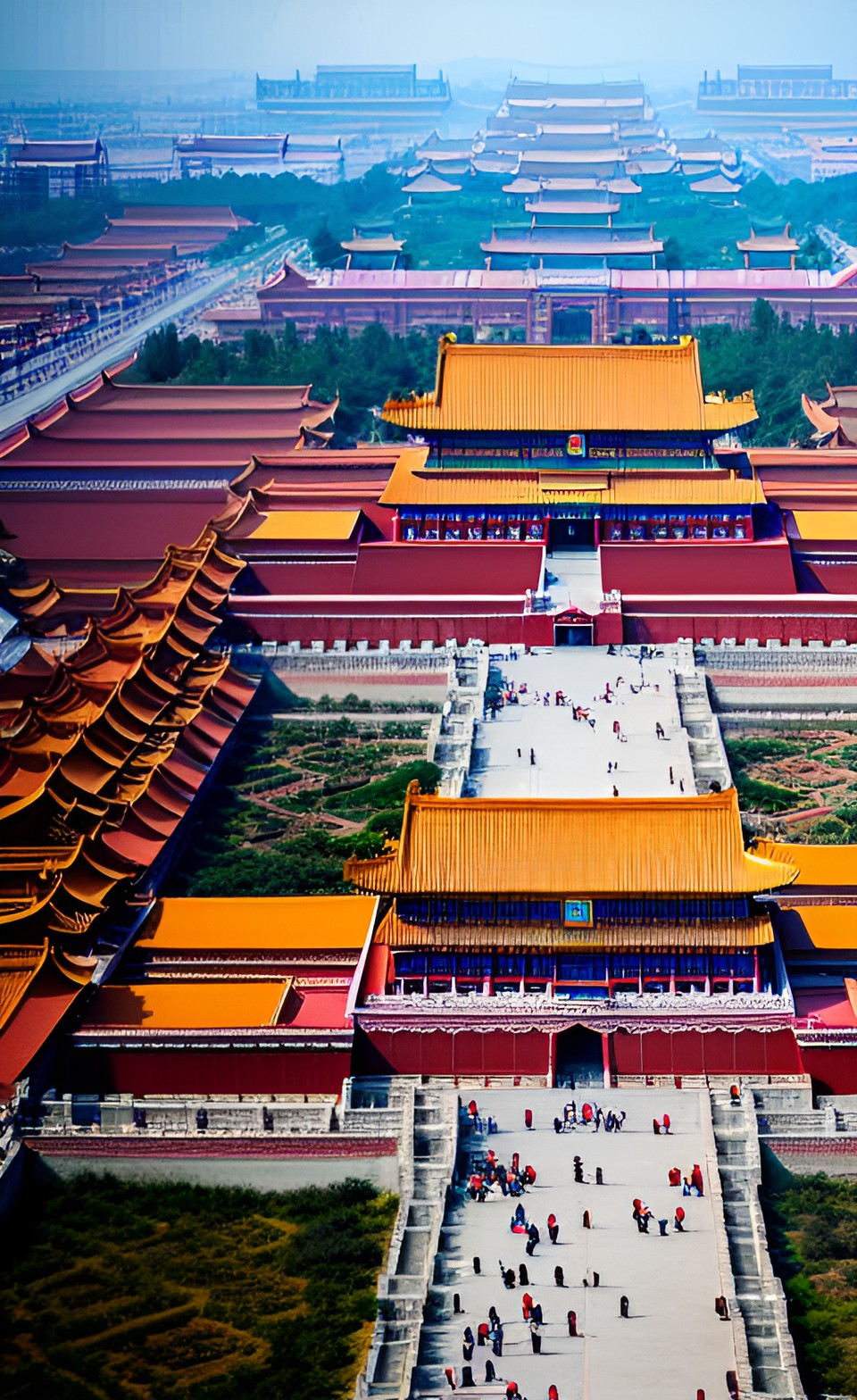Celestial City
The Celestial City (Noamese: Тэнгэрийн Хот, Riadicised: Tengeriin Khot /'tɛn ɡɛˌɹɪŋ xɒt/) is a centurís-old complex of grand palaces, sacred temples, great halls, and lavish royal residences, located at the center of the walled Imperial City in the heart of Samlazaz, Noam. The fortified government and religious center also features acra of magnificent royal gardens containing numerous opulent shrines and temples. Home to some of the largest and best-preserved Middle Age wooden structures in the world, it was listed as a Council of Nations World Heritage Site in 1961.
Access to the Celestial City is strictly limited, with uniformed palace guards patrolling the area at all times. Only the Royal Household, senior members of Shashin religious orders, the Qaghan’s most trusted advisors and government ministers, high-level foreign dignitaries, and others having special business with the Imperial Government, or granted special permission from the Qaghan himself, are allowed to enter its sacred confines.
Origin
The Celestial City was built on the supposed site of the fabled Ülgen Khiid between 1229 and 1244 by Kültömör, son of Khamgiin Ghan, to be the new capital of his vast and rapidly expanding empire. The work employed over 100,000 artisans and more than a million forced laborers. Since that time, it has served as the imperial palace and winter residence of fifty-eight consecutive Qaghans of Noam and their households, and as such, has been the ceremonial and political center of the Noamese government for nearly 750 years.Description
The walled city was designed to display the awesome power of the Qaghan, to exemplify the virtues of balance and tranquility, and to emphasize the insignificance of the individual. It is reputed to hold 1,000 buildings containing 10,000 rooms, although neither of those numbers has ever been officially confirmed. It covers roughly 100 acra in the center of a cluster of imperial gardens and parks within the walls of the Imperial City. It was designed to be the political, religious and cultural nerve center of Kültömör’s new capital at Samlazaz.The royal palaces of the Celestial City are segregated from the Imperial City and the rest of Samlazaz by their own massive, rectangular, heavily guarded city wall that stands 9 yards high and 9 yards wide at the base, and measures 1,000 yards from north to south and 800 yards from west to east. The walls are surrounded by a moat, 7 yards deep and 50 yards wide, bridged only at four elaborately decorated gates.
The front portion of the walled compound, known as the Gadna Shüükh (Noamese: Гадна Шүүх, “Outer Court”), is accessed through the Gate of the Sun (Khaalga Narny). Its broad courtyard is dominated by the Great Hall of Supreme Tranquility (Ikh Tankhim Deed Taivanbaidal), and flanked by administrative office buildings and lush gardens.
Initially named the Hall of Imperial Supremacy (Tankhim Deed Ezenghaan Baidal), the original structure burned to the ground in 1529. It was rebuilt and expanded by Qaghan Delger II and rededicated in 1534 with its current name.
The Great Hall serves as the ceremonial center of Qaghan rule. Its Throne Room is considered to be the center of the cosmos, from which all laws and decrees are issued. It is the site of the Enthronement Ceremony of the Noamese Ritual of Investiture, and the official state chamber in which government ministers, religious clerics and foreign ambassadors are received.
The innermost section of the Celestial City, called the Khoriotoi Shüükh (Noamese: Хориотой Шүүх, “Forbidden Court”), is the residence of the Qaghan, strictly reserved to the Imperial Households alone. Trespassers risk immediate execution. It is accessed through the Gate of Eternal Serenity (Khaalga Mönkhiin Taivan Baidal). At its center are three royal palaces.
The southernmost is the palace of the Qaghan, the Palace of Worldly Harmony (Ordon Delkhiin Evnairamdal), where the Qaghan attends to his day-to-day affairs. The northernmost palace is the Palace of the Ghatun, called the Palace of Heavenly Virtue (Ordon Tengerleg Buyan). Between the two rises the lavish Palace of Unity (Ordon Evnegdel), used for ceremonial purposes such as royal birthdays and the issuance of patronages and titles.
Celestial City
Тэнгэрийн ХотNATIONAL CAPITAL
WORLD HERITAGE SITE
General Information
Established:
1228
Built:
1229-1244
Area:
109.75 acra
Architect:
Xangai Khityekhor
Style:
Noamese Architecture
Location:
Gdm. Khamgiin Ghan,
Ezgüren Khot, Samlazaz, Noam
Type:
Imperial Palace,
Historic Site




Hell yes Mongolian influence! I love this, I love how much you've put into this. You always write such deep, wonderful places and I adore it.
welcome to my signature! check out istralar!